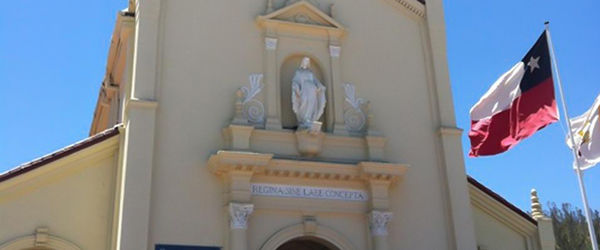On December 9, a day after the feast of the Immaculate Conception and three days before that of Our Lady of Guadalupe, we celebrate the blessings we have received through a remarkable saint, Juan Diego.
But who was he and why is he important?
Many who are familiar with the miracle in Mexico in 1531 when the Blessed Virgin Mary appeared to an indigenous man on a hill near Mexico City will recognize the name Juan Diego. This, however, was the Spanish name he had been given at baptism. His name in his native Nahuatl language was Cuhauhtlatoatzin and it meant approximately “he who speaks like an eagle.” The eagle was a powerful symbol of authority related to the founding of the Aztec empire.
According to historical records, Juan Diego was known to his people as a holy man. Among the Nahua or Aztecs he was also called El Peregrino, the pilgrim, because of his frequent solitary journeys to pray at a remote hill. This had been the site of a temple once devoted to the Aztec goddess identified with maternal care that had been destroyed during the Spanish conquest a decade earlier.
It was on this hill called Tepeyac where the Virgin Mary appeared to him, speaking in his own language, and assuring him that while she was the Mother of the Son of God, Jesus Christ, she was his mother as well. This miracle, or rather the series of miracles that followed, became the foundation of the Catholic faith among a new people, the racial mix of indigenous and Spanish, who became “Mexicans.” This amazing event provided the origins of Mexico as a culture and then a nation.
Juan Diego presented roses he had gathered which had miraculously appeared on the hill in winter to the Bishop of Mexico City as proof of the Virgin’s appearance. As he did, her image appeared, again miraculously, on his cloak or tilma. This garment has been preserved and can be seen still bearing the image at the Shrine of Our Lady of Guadalupe in Mexico City, one of world’s major religious centers.
There is even more to this remarkable story, but in its telling sometimes Juan Diego tends to be set to one side. In the many artistic depictions, including those of Mexico’s most celebrated painters, he is seen kneeling before the Virgin, often reduced to a small, almost unnoticed figure. This doesn’t do justice to this remarkable man, now revered as a saint.
Juan Diego is the first indigenous person in the Western hemisphere to be canonized. He was also the first in the Americas to recognize that the Virgin Mary is the mother of all of us beyond race, ethnicity or nationality. As the Virgin of Guadalupe, the Spanish name given to her, the Church has declared her the Mother and Protectress of all the Americas.
Mary’s maternity makes us all brothers and sisters.
There are many images now of Juan Diego that accurately depict him as clearly indigenous. Often he is portrayed appropriately as humble and submissive to the requests of the Holy Mother but we should not lose sight of his nobility, courage and determination. Bishop John Wester of Salt Lake City, chair of the U.S. Bishops Committee on Migration, has perceptively recognized Juan Diego as symbolizing the dignity of all people, no matter their origin, poverty or lack of status. Juan Diego’s inherent dignity as well as his piety and devotion should be an inspiration to everyone and bring us closer together.
On December 9, 2012, we will celebrate the tenth anniversary of Juan Diego’s canonization by Pope John Paul II. This will be inseparable from our honoring of the Virgin of Guadalupe and there will be Masses, music and processions as well as beautiful artwork to behold.
We should not lose sight, however, of the meaning of the miraculous events we are celebrating.
As we celebrate the Feast of Our Lady of Guadalupe with great joy, we Catholics honor images but we do not worship them. We don’t pray to idols but rather pray through icons, means by which we deepen our prayers.
Nor are we worshipping Juan Diego, but through him we are encountering the One God revealed by His Son. Saint Juan Diego and the Holy Mother herself appear for the purpose of bringing us the redemptive, healing love of Jesus Christ.
Ron Austin is the author of “Peregrino: A Pilgrim Journey into Catholic Mexico” (Eerdmans Press), recipient of the 2011 second place Award in History from the Catholic Press Association. This is part one of a two-part series.
{gallery width=100 height=100}gallery/2011/1202/juandiego/{/gallery}

